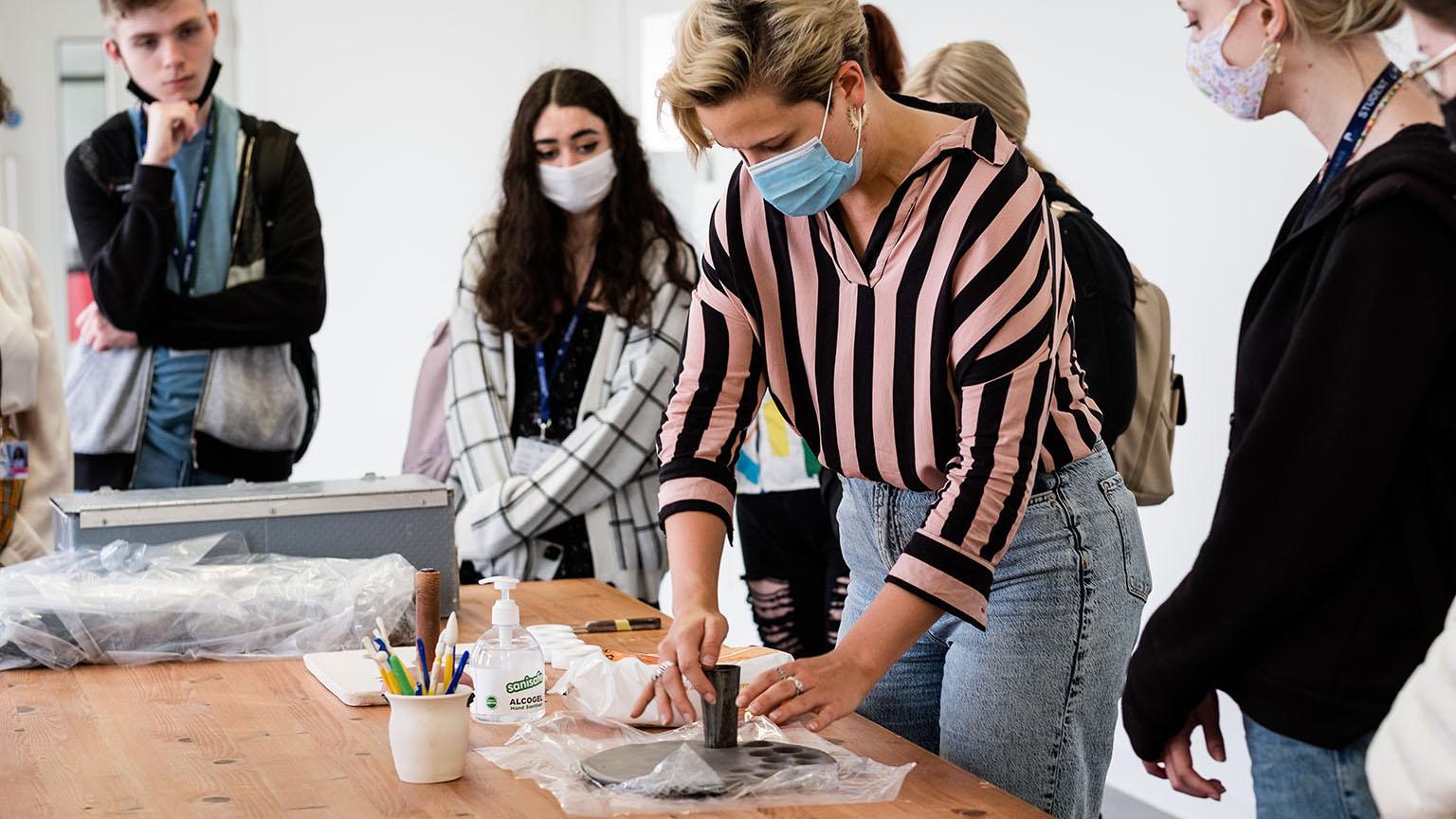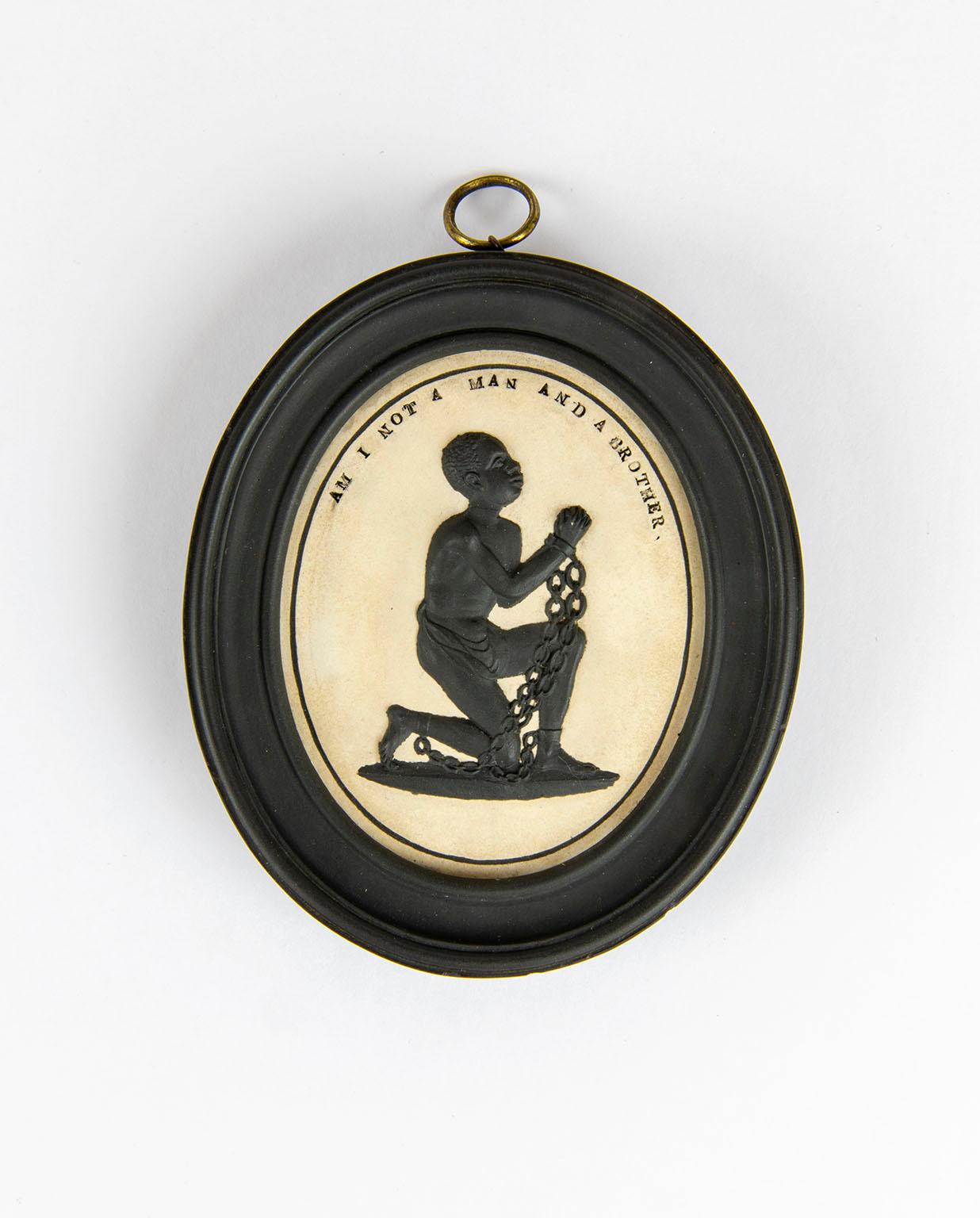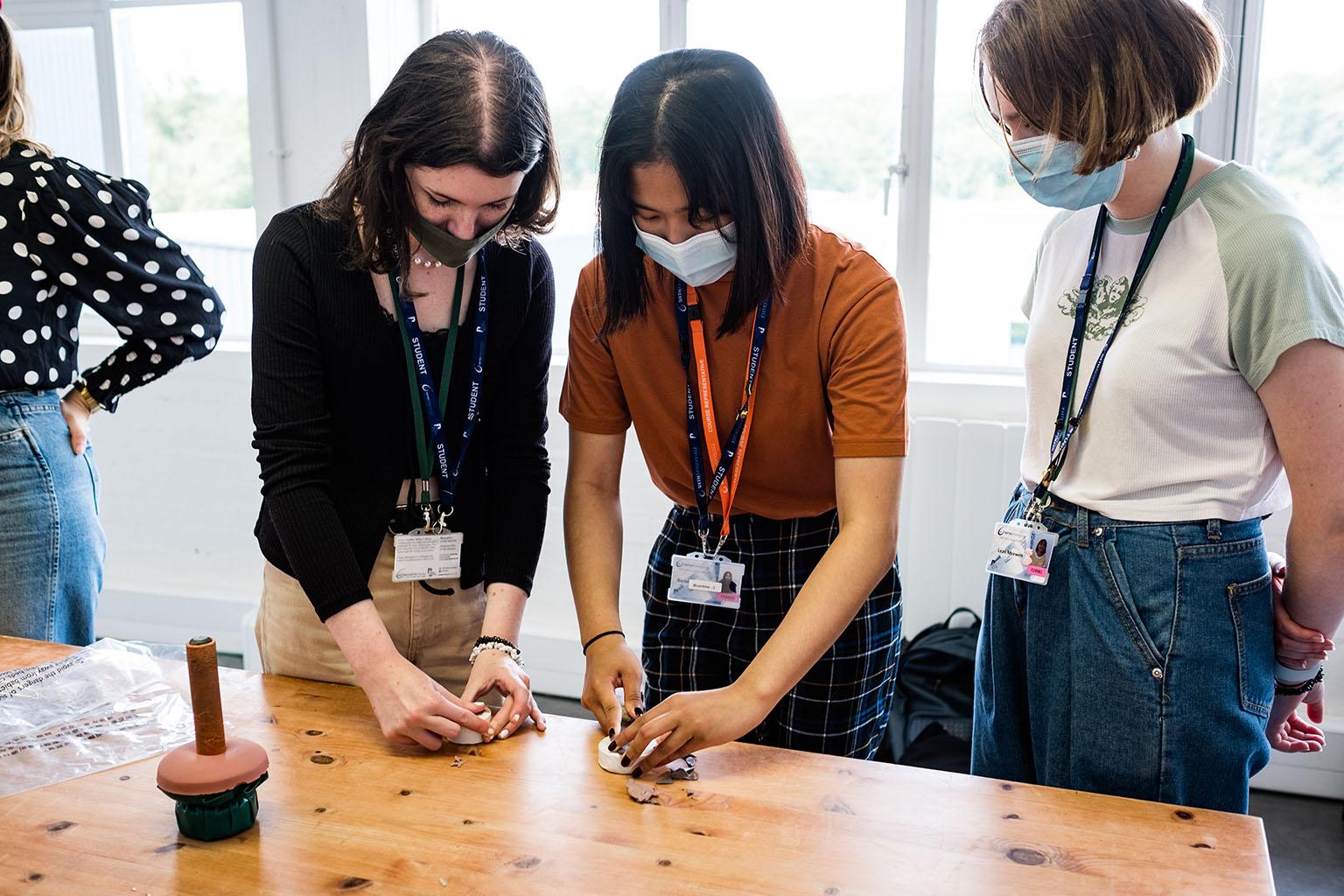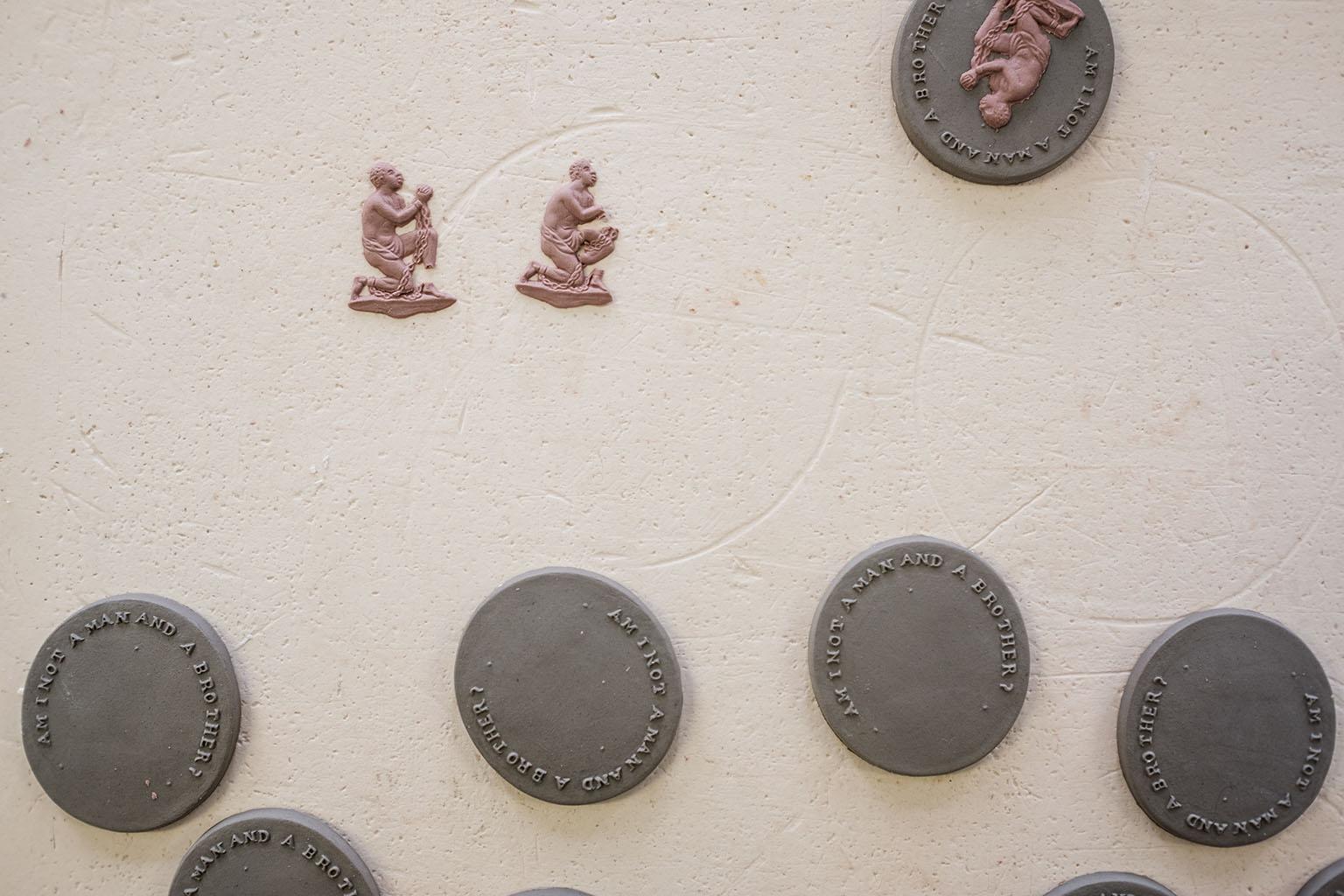How an abolitionist medallion is connecting young people to their heritage

David Trigg explores how a small but significant object from the V&A Wedgwood Collection, acquired with Art Fund support, is reconnecting young people in Stoke-on-Trent with an important part of their history.
When England’s footballers began to take the knee following the police killing of George Floyd and the anti-racism protests that subsequently erupted in 2020, their gesture echoed the 18th-century abolitionist image of a kneeling Black man in chains, asking, ‘Am I Not a Man and a Brother?’
Originally designed for the Society for the Abolition of the Slave Trade, the motif was made famous by the potter and entrepreneur Josiah Wedgwood, who in 1787 transformed it into a ceramic medallion to support the abolitionist cause.
Thousands of the medallions were distributed across Britain, coming to adorn everything from brooches to snuffboxes. Several of them feature in the V&A Wedgwood Collection at Barlaston, Stoke-on-Trent, one of the most important industrial archives in the world, which was saved for the nation in 2014, following a major public campaign led by Art Fund, with money raised in excess of the amount needed.

Despite playing a pivotal role in the Black history of Britain, the medallion had been languishing in semi-obscurity at Barlaston. Catrin Jones, who was appointed inaugural chief curator at the V&A Wedgwood Collection in 2020, recognised the need to reconsider the iconic object in light of current events. ‘The image of a kneeling Black figure had gained a particular resonance,’ she explains, ‘so we wanted to think about the history of Wedgwood’s seminal protest symbol from a contemporary perspective.’
The outcome, ‘I am a Man and a Brother’, is a research project and series of displays supported by Art Fund (through the Wedgwood Future Fund, which manages the additional campaign money raised) that foregrounds Wedgwood’s medallion, exploring both its context and the wider history of abolition and anti-racism.
Wedgwood’s attitude to abolition was pretty revolutionary for its time, and we wanted to explore how we might be able to expand his allyship
From the beginning, Jones knew that she wanted to engage young people in the project. ‘Young people’s perspectives can transform the way that we tell stories,’ she says.
A week-long workshop for 14 art and design students from City of Stoke-on-Trent Sixth Form College was co-led by Georgia Haseldine (V&A Research Institute public engagement fellow) and Grace Barrett (founder of the anti-racism education organisation I Am Ally). The workshop encouraged the participants to design their own protest medallions using Wedgwood’s techniques, but conveying contemporary messages of anti-racism, allyship and empowerment. The students also learned about Britain’s history with relation to the Slave Trade, the British Empire and the Windrush.
‘The project is about telling a full history of the medallion,’ explains Barrett. ‘Wedgwood’s attitude to abolition was pretty revolutionary for its time, and we wanted to explore how we might be able to expand his allyship.’


Although Wedgwood is significant in Stoke-on-Trent’s history, few students were aware of his abolitionist activities. ‘It was a real revelation for them,’ says Jones. ‘They were amazed that this story is a part of their heritage.’
For Haseldine, the project highlighted the importance of engaging young people with the collection: ‘A lot of young people in Stoke have grandparents who worked at Wedgwood or other potteries, but that connection to local industrial heritage is disappearing.’
Barrett was encouraged by the students’ engagement, especially when many had never used clay before. ‘Their design skills were incredible,’ she says. ‘The way they instantly understood the importance of empowered imagery gave me hope for the future.’ Jones was similarly impressed with them: ‘One student created an extraordinary design showing a fist holding an olive branch with a rising sun and pottery kilns behind – a message of hope that celebrates Stoke’s role in this amazing story.’
The new medallions form part of an exhibition and trail co-curated by the students that explores the history and the enduring relevance of Wedgwood’s protest symbol. Materials from the archive also on display include correspondence between Wedgwood and prominent abolitionists such as Thomas Clarkson and former enslaved person Olaudah Equiano. ‘I really hope visitors gain a richer understanding of Wedgwood’s allyship,’ Barrett says. ‘The display has many empowering images of Black people; we’re saying that they matter here and their history deserves to take up space.’
Inviting visitor feedback, the temporary trail will inform a permanent redisplay of Wedgwood’s medallion later in 2022. ‘This is very much a pilot for future activity,’ says Jones of the project, which provides a model for a new programme of exhibitions and events aimed at making the Wedgwood Collection more accessible. ‘We are a really small team, and developing a project like this with so many partners just wouldn’t have been possible without Art Fund support.’ Haseldine concurs: ‘The support was transformative. It enabled us to experiment and involve local communities, bringing them with us and including their voices.’
Inspired by this story?
Art Fund is currently fundraising to raise £1 million for museum projects that inspire young people.
Thanks to a generous supporter, we’re now able to match-fund new donations – so anything you give from 8 February 2022 will be matched pound-for-pound, making twice the impact. Find out how you can help #EnergiseYoungMinds.
A version of this article first appeared in the winter 2021 issue of Art Quarterly, the magazine of Art Fund.
‘I am a Man and a Brother’ display and trail is on at the V&A Wedgwood Collection, Barlaston, until March. Free to all.